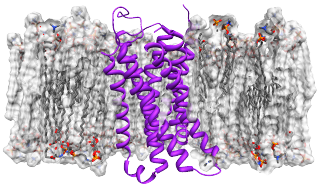
OCTOPAMINE RECEPTOR
There are approximately 250 million cases of malaria each year, causing nearly 1 million deaths, primarily in African children. Mosquitoes are the primary carriers of malaria, transmitting the Plasmodium parasites to humans, and insecticides are currently the mainstay of malaria control. However, insecticide resistance is increasing in mosquitoes, requiring research into new and more effective insecticides to control these disease-transmitting insects. Octopamine receptors, a class of G-Protein Coupled Receptors (GPCRs) present in mosquitos, but not in humans, are promising targets for new, safe insecticides.
X-ray crystal or NMR structures of insect GPCRs are not yet available. Using homology modeling, CAMD scientists created 3D models and derived the coordination mode of known agonists and antagonists through virtual screening. The conformation derived from the docking was further refined by running >20 ns of molecular dynamics (MD) to generate snapshots stabilized at different stages of the MD. These were used to screen the drug-like library from the ZINC database, and new potential hits have been selected for both agonists and antagonists, attaining in some cases ~ 60% inhibition in experimental studies.
